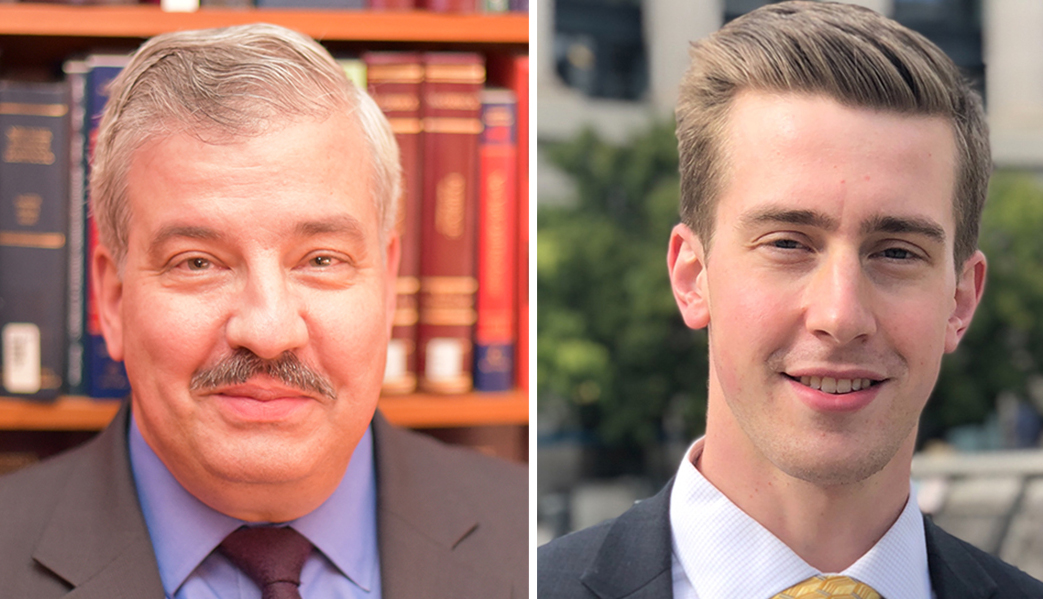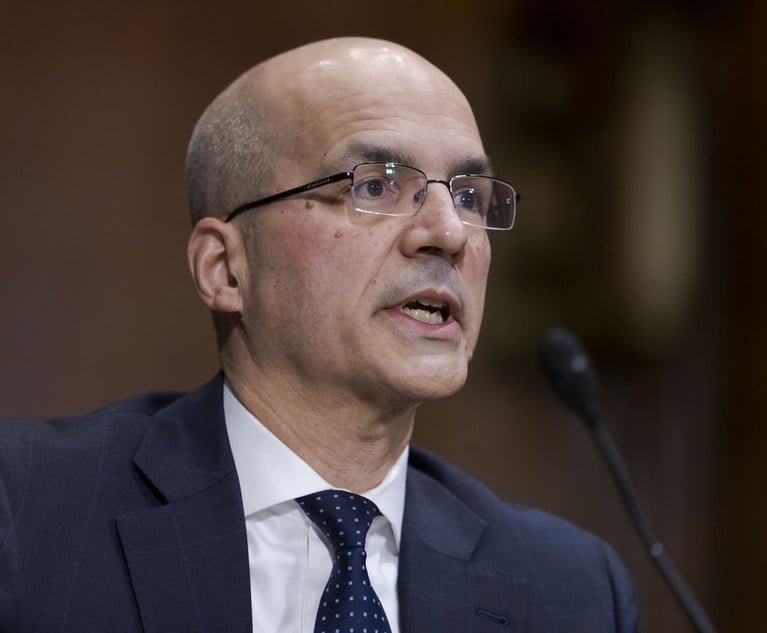Child Victims Act: You Can Sue. Now What? (Part Two)
In their Burden of Proof column, David Paul Horowitz and Lukas M. Horowitz continue their discussion of the Child Victims Act and the one-year revival window for civil claims that were previously time-barred. Notwithstanding the liberalization of the statute of limitations, there are pleadings, privilege, disclosure, and evidentiary issues complicating the successful prosecution of the actions.
September 03, 2019 at 12:00 PM
12 minute read
 David Paul Horowitz and Lukas M. Horowitz
David Paul Horowitz and Lukas M. Horowitz
Portions of the Child Victims Act took effect Feb. 14, 2019, and the one-year revival window for civil claims that were previously time-barred, opened Aug. 14, 2019 (see Part One of this column published on that date). While litigants have taken advantage of the revival window, it may not result in the anticipated deluge of new filings. Whether this is reflective of the actual number of cases, or a strategic response to the "fast track" created for these cases, discussed below, remains to be seen.
New subsection (b) was added to CPLR 208's toll for infancy and insanity, extended the statute of limitations for certain acts of sexual abuse involving a minor to the date when that minor reaches the age 55, eliminating a bar to timely commencement for claims whose victims are very often unable, for myriad reasons, to bring an action until years or decades after suffering abuse.
Amendments to, inter alia, Gen. Mun. L. §§50-e and 50-i and Court of Claims Act §7, eliminate the requirement of the service of a notice of claim, as a condition precedent, to bring suit against governmental entities, including the state of New York.
Notwithstanding the liberalization of the statute of limitations, there are pleadings, privilege, disclosure, and evidentiary issues complicating the successful prosecution of the actions. But first, a discussion of the "fast track" established for resolving revived cases.
The 'Fast Track'
New statewide rules for cases brought under the revival provisions of the Act have been enacted, and were detailed in our last column. Dedicated parts have been established, and training in subjects related to sexual assault and the sexual abuse of minors for judicial staff engaged in ADR is ongoing.
Judges have been directed, "in the exercise of their discretion" in revived actions, to be "mindful of the statutory directive that such actions be adjudicated in a timely fashion," and timetables have been established whereby a Preliminary Conference will be held within 30 days of the filing of the RJI, with Status Conferences every 60 days thereafter, and a note of issue to be filed within 365 days of the Preliminary Conference. The rules go on to acknowledge the existence of "pending proceedings addressing insurance coverage issues," and "the difficulties inherent in document, deposition, and other discovery in matters of this type and age."
Plaintiff attorneys may not rush to bring revival suits immediately upon the opening of the revival window, concerned about their ability to obtain necessary information outside the formal discovery process where many records will be old, and either difficult or impossible to obtain; where identifying and tracking down witnesses may be time consuming; and where physical evidence is likely non-existent. Because of this, and given the enactment of an accelerated formal disclosure process, it may be prudent to assemble as much proof and other material related to prosecuting the action before commencing the action. On the other hand, where the identification of one or more potential defendants is unknown, Doe v. Roman Catholic Archdiocese of N.Y., discussed below, offers a compelling reason to commence an action posthaste.
Pleadings
A revived action must be based upon the occurrence of acts constituting "a sexual offense as defined in article one hundred thirty of the penal law committed against a child less than eighteen years of age, incest as defined in section 255.27, 255.26 or 255.25 of the penal law committed against a child less than eighteen years of age, or the use of a child in a sexual performance as defined in section 263.05 of the penal law."
While New York remains a notice pleading jurisdiction, given the requirement that the conduct alleged constitute one or more of the above-mentioned offenses, it would be good practice to specify in the complaint the penal law offense(s) alleged to have been committed by the defendant to avoid a pre-answer motion to dismiss based on failure to state a claim. Whether or not details of the acts underpinning the offenses should be set forth in any detail is another matter, and whatever the course selected, plaintiff attorneys will want to consider commencing the action anonymously, substituting "Anonymous," "John Doe," or "Jane Doe" for the name of the plaintiff.
In Anonymous v. Lerner, 124 A.D.3d 487 (1st Dep't 2015), the First Department affirmed the trial court's grant of defendant's motion to compel the plaintiff to be named in an action alleging the negligent and fraudulent transmission of genital herpes:
The determination of whether to allow a plaintiff to proceed anonymously requires the court to "use its discretion in balancing plaintiff's privacy interest against the presumption in favor of open trials and against any potential prejudice to defendant."
The trial court did not improvidently exercise its discretion in finding that plaintiff's privacy concerns were outweighed by, inter alia, the fact that the action was brought against an individual defendant, relates to his private life and reputation, and puts plaintiff's credibility at issue, and undermined by her reporting her story to the media before serving defendant with process … "[C]laims of public humiliation and embarrassment … are not sufficient grounds for allowing a plaintiff … to proceed anonymously"
A number of trial courts have permitted plaintiffs alleging they were the victims of sexual assault to proceed anonymously, including Doe v. New York Univ., 6 Misc.3d 866 (Sup. Ct., New York Cty., Justice Edmead 2004), which held:
As alleged in this case, plaintiffs, the victims of sexual assault, have suffered emotional distress. Plaintiffs have allegedly undergone psychotherapy. The use of pseudonyms will avoid any sensational publicity associated with the widely recognized university, NYU … Thus, in accordance with the principles outlined above, and in lieu of sealing, the court records may be amended by replacing plaintiffs' names with pseudonyms, so as to protect plaintiffs' privacy.
Doe was cited by Anonymous v. Lerner, but for the proposition that "claims of public humiliation and embarrassment … are not sufficient grounds for allowing a plaintiff … to proceed anonymously." It was also cited by the First Department in J. Doe No. 1 v. CBS Broadcasting, 24 A.D.3d 215 (2005), as a "see, e.g.," case, after the court's holding in that "[t]he action was not properly brought pseudonymously since plaintiffs have not alleged a matter implicating a privacy right so substantial as to outweigh the customary and constitutionally embedded presumption of openness in judicial proceedings." Thus, the First Department has tacitly signaled its approval of Justice Edmead's decision to allow plaintiff victims of sexual assault to proceed anonymously.
Jurisdiction
In Doe v. Roman Catholic Archdiocese of N.Y., 2019 NY Slip Op 51216(U) (Sup. Ct., Westchester Cty., Justice Ruderman July 31, 2019), discussed in the last column, one of the respondents, Calabrese, who as a seminarian in 1983 or 1984 allegedly sexually molested the petitioner who was 13 years old at the time, argue[d] that the court lacked jurisdiction over him because he did not live or transact business within New York state, a claim the court easily dispensed with: "This Court finds that it may assert jurisdiction over Calabrese through the long-arm jurisdiction statute of this state (see CPLR 302 [a][2]). Petitioner alleges that he was sexually molested by Calabrese in New York state. The fact that Calabrese no longer resides within the confines of the state does not defeat its jurisdiction over him."
Pre-Action Disclosure
Doe v. Roman Catholic Archdiocese of N.Y. addressed petitioner's demand for pre-action disclosure, which he claimed was "material and necessary to aid in the prosecution of his forthcoming claims, to frame his pleadings, to ensure compliance with the CVA statute of limitations period, and to preserve information." Petitioner contended:
[T]here are other witnesses who are material to petitioner's claims who have become, or are in significant danger of becoming, unavailable, due to, inter alia, advancing age. He contends that the identity of these witnesses is in the exclusive custody and control of the respondents, and argues that pre-action discovery is appropriate in this instance since the CVA look-back provision only provides for a one-year extension of the statute of limitations. Petitioner maintains that he will be significantly prejudiced if he is required to wait until after filing his complaint to seek this discovery.
Additionally, petitioner asks the Court to direct respondents to preserve and log all relevant documents in their custody, possession, and control concerning any alleged misconduct by Calabrese. Petitioner requests that the Court appoint a special master to oversee the document logging and preservation of the documents and the creation of a report concerning that document logging and preservation.
In addition to procedural arguments addressed to petitioner's failure to comply with the requirements of CPLR 302, the Church Respondents argued pre-action disclosure was unnecessary:
Even if petitioner had demonstrated a meritorious cause of action, it appears, based upon the papers filed in support of this petition, that petitioner has sufficient information to frame a complaint, and consequently, "the pre-action disclosure he seeks is unavailable to him" … This Court finds that petitioner has failed to demonstrate a basis for granting pre-action discovery with respect to the names of other defendants or witnesses who may have information relevant to petitioner's allegations. Nor has petitioner demonstrated a basis for pre-action discovery of the names of Calabrese's co-workers or supervisors. To the extent that the petition seeks this information in order to identify additional defendants or witnesses, that information can be obtained through discovery once an action has been commenced. Moreover, contrary to petitioner's assertions, he has failed to demonstrate that he will be prejudiced by waiting to conduct this discovery until he files his complaint.
As for the portion of the petition which seeks to preserve certain documents, petitioner has presented only unsubstantiated assertions that this information is in jeopardy of destruction." [M]ere conclusory statements of suspicion and conjecture are insufficient" to grant disclosure under CPLR 3102 (c) … Moreover, the Church Respondents have averred that they are currently preserving all relevant documents and information in their custody and control. Therefore, there is nothing before the Court to indicate that the requested pre-action disclosure is necessary to preserve information.
The court denied petitioner's application in its entirety. While Doe v. Roman Catholic Archdiocese of N.Y. is a cautionary tale of what not to do, at the same time it offers guidance on how to properly navigate the issues raised by the petitioner.
The court did not speak to petitioner's claim vis-à-vis the one-year revival period and petitioner's claim of prejudice if compelled to seek disclosure of the identity of additional defendants, unknown at present, through the regular disclosure process. The accelerated disclosure and frequent conferencing will no doubt help plaintiffs to identify potential additional defendants more rapidly, and this is a situation where delay in commencing a revived action may be dangerous.
While identifying presently unknown defendants as "John Doe" and "Jane Doe," and describing them with sufficient particularity, can afford plaintiffs time to identify and serve those defendants in an action timely commenced within the one-year revival period, it is far safer to have all defendants identified and named in the complaint. Other tools to bring in as a defendant an individual or entity not identified in an action commenced within the revival period, such as relation back and united in interest, are fraught with danger and should be used only as an absolute last resort.
Disclosure Issues
As discussed above, disclosure may be necessary to identify potential defendants, including the assailant's employer or principal at the time the sexual abuse was committed. In order to meet the burden of proof against employers or principals, disclosure to determine the assailant's propensity, if any, to commit sexual abuse or otherwise harm or endanger children, as well as the assailant's employer's or principal's knowledge of any such propensities, may be required. Finally, defendants will conduct disclosure to determine the extent of the victim's damages and the existence of proof to support, and refute, those damages.
New York's broad disclosure scheme will allow detailed disclosure of these, and doubtless many other issues, although resistance to even patently proper disclosure demands can be anticipated. The recent decision of the Court of Appeals in Forman v. Henkin, 30 N.Y.3d 656 (2018) provides support for extensive disclosure and what is, and is not, required by way of foundation to obtain disclosure.
Hopefully, the conferencing schedule for revived cases will resolve many disclosure disputes without the necessity of motion practice, and parties always have the right to seek a protective order, pursuant to CPLR 3103, to curb disclosure abuses.
Conclusion
The ability to bring revived actions on behalf of victims of child sexual abuse is a powerful tool to address a great injustice. But it is a tool that requires care in its use, and there is a danger that the rights newly capable of being vindicated will be lost. Revived actions are more complicated, and the path to successful resolution is more difficult, than apparent at first glance.
David Paul Horowitz is a member of McNamara & Horowitz in New York City, where he represents plaintiffs and defendants in personal injury actions. He is a Lecturer at Law at Columbia Law School, and serves as a legal malpractice expert, private arbitrator, mediator, and discovery referee. He can be reached at [email protected]. Lukas M. Horowitz is a 2019 graduate of Albany Law School.
This content has been archived. It is available through our partners, LexisNexis® and Bloomberg Law.
To view this content, please continue to their sites.
Not a Lexis Subscriber?
Subscribe Now
Not a Bloomberg Law Subscriber?
Subscribe Now
NOT FOR REPRINT
© 2025 ALM Global, LLC, All Rights Reserved. Request academic re-use from www.copyright.com. All other uses, submit a request to [email protected]. For more information visit Asset & Logo Licensing.
You Might Like
View All
'Serious Legal Errors'?: Rival League May Appeal Following Dismissal of Soccer Antitrust Case
6 minute read
How Some Elite Law Firms Are Growing Equity Partner Ranks Faster Than Others
4 minute read
Trending Stories
- 1GOP-Led SEC Tightens Control Over Enforcement Investigations, Lawyers Say
- 2Transgender Care Fight Targets More Adults as Georgia, Other States Weigh Laws
- 3Roundup Special Master's Report Recommends Lead Counsel Get $0 in Common Benefit Fees
- 4Georgia Justices Urged to Revive Malpractice Suit Against Retired Barnes & Thornburg Atty
- 5How Gibson Dunn Lawyers Helped Assemble the LA FireAid Benefit Concert in 'Extreme' Time Crunch
Who Got The Work
J. Brugh Lower of Gibbons has entered an appearance for industrial equipment supplier Devco Corporation in a pending trademark infringement lawsuit. The suit, accusing the defendant of selling knock-off Graco products, was filed Dec. 18 in New Jersey District Court by Rivkin Radler on behalf of Graco Inc. and Graco Minnesota. The case, assigned to U.S. District Judge Zahid N. Quraishi, is 3:24-cv-11294, Graco Inc. et al v. Devco Corporation.
Who Got The Work
Rebecca Maller-Stein and Kent A. Yalowitz of Arnold & Porter Kaye Scholer have entered their appearances for Hanaco Venture Capital and its executives, Lior Prosor and David Frankel, in a pending securities lawsuit. The action, filed on Dec. 24 in New York Southern District Court by Zell, Aron & Co. on behalf of Goldeneye Advisors, accuses the defendants of negligently and fraudulently managing the plaintiff's $1 million investment. The case, assigned to U.S. District Judge Vernon S. Broderick, is 1:24-cv-09918, Goldeneye Advisors, LLC v. Hanaco Venture Capital, Ltd. et al.
Who Got The Work
Attorneys from A&O Shearman has stepped in as defense counsel for Toronto-Dominion Bank and other defendants in a pending securities class action. The suit, filed Dec. 11 in New York Southern District Court by Bleichmar Fonti & Auld, accuses the defendants of concealing the bank's 'pervasive' deficiencies in regards to its compliance with the Bank Secrecy Act and the quality of its anti-money laundering controls. The case, assigned to U.S. District Judge Arun Subramanian, is 1:24-cv-09445, Gonzalez v. The Toronto-Dominion Bank et al.
Who Got The Work
Crown Castle International, a Pennsylvania company providing shared communications infrastructure, has turned to Luke D. Wolf of Gordon Rees Scully Mansukhani to fend off a pending breach-of-contract lawsuit. The court action, filed Nov. 25 in Michigan Eastern District Court by Hooper Hathaway PC on behalf of The Town Residences LLC, accuses Crown Castle of failing to transfer approximately $30,000 in utility payments from T-Mobile in breach of a roof-top lease and assignment agreement. The case, assigned to U.S. District Judge Susan K. Declercq, is 2:24-cv-13131, The Town Residences LLC v. T-Mobile US, Inc. et al.
Who Got The Work
Wilfred P. Coronato and Daniel M. Schwartz of McCarter & English have stepped in as defense counsel to Electrolux Home Products Inc. in a pending product liability lawsuit. The court action, filed Nov. 26 in New York Eastern District Court by Poulos Lopiccolo PC and Nagel Rice LLP on behalf of David Stern, alleges that the defendant's refrigerators’ drawers and shelving repeatedly break and fall apart within months after purchase. The case, assigned to U.S. District Judge Joan M. Azrack, is 2:24-cv-08204, Stern v. Electrolux Home Products, Inc.
Featured Firms
Law Offices of Gary Martin Hays & Associates, P.C.
(470) 294-1674
Law Offices of Mark E. Salomone
(857) 444-6468
Smith & Hassler
(713) 739-1250







